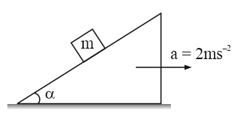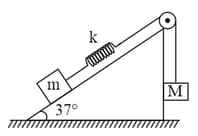Two blocks of masses and are connected with a string passing over a pulley as shown in figure. The block lies on a horizontal surface. The coefficient of friction between the block and the horizontal surface is . The system accelerates. What additional mass should be placed on the block so that the system does not accelerate?
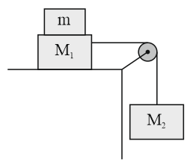

Important Questions on Newton's Laws of Motion (With Friction)
A trolley has a simple pendulum suspended from a frame fixed to its desk. A block is in contact on its vertical side. The trolley is on horizontal rails and accelerates towards the right such that the block is just prevented from falling. The value of coefficient of friction between and is . The inclination of the pendulum to the vertical is
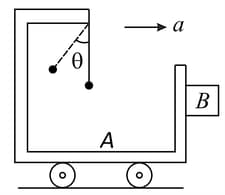
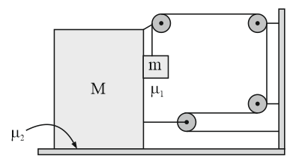
A block of mass is lying on a wedge having inclination angle . Wedge is moving with a constant acceleration . The minimum value of coefficient of friction so that remains stationary wedge is
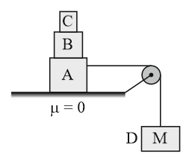
A chain of length is placed on a horizontal surface as shown in figure. At any instant is the length of chain on rough surface and the remaining portion lies on smooth surface. Initially . A horizontal force is applied to the chain (as shown in figure). In the duration, changes from to . For chain to move with constant speed,
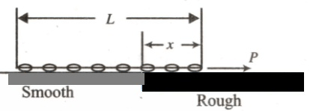
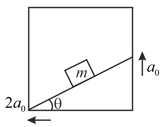
Find the least horizontal force to start motion of any part of the system of the three blocks resting upon one another as shown in figure. The weights of blocks are and . Between and , the coefficient of friction is , between and is , and between and the ground is .
A block of mass is attached with a massless spring of force constant . The block is placed over a rough inclined surface for which the coefficient of friction is is released from rest when the spring was unstretched. The minimum value of , required to move the block up the plane is (neglect mass of string and pulley and friction in pulley)

